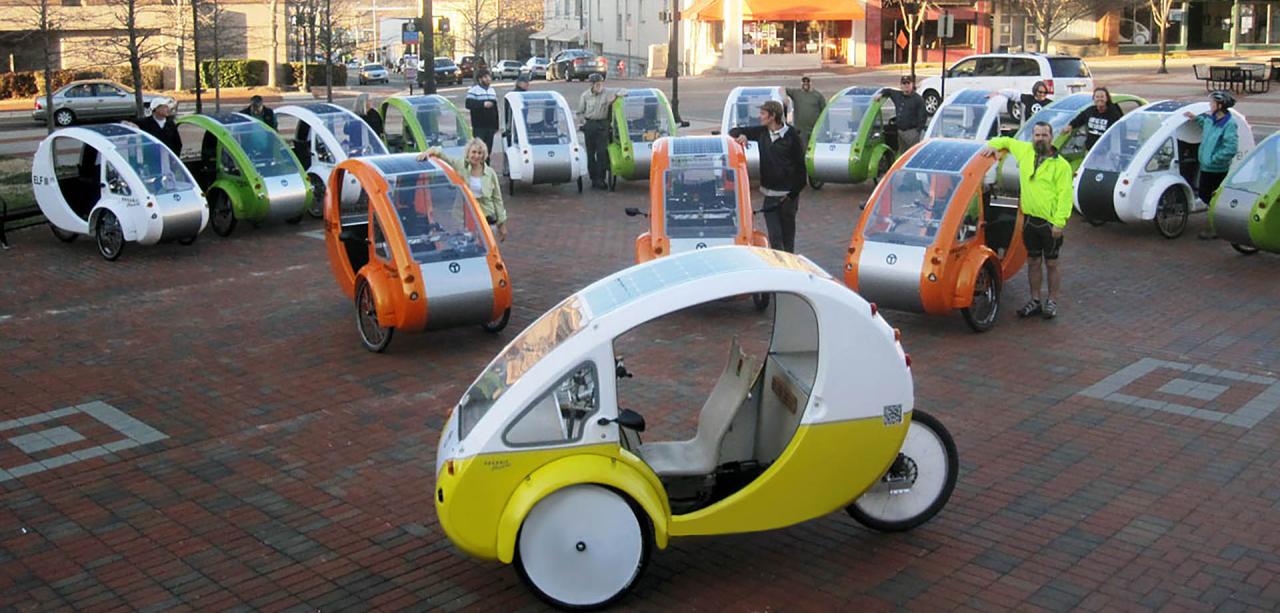Eco-friendly transport solutions in Asia have gained significant traction in recent years, paving the way for a more sustainable future in the region. From innovative public transportation systems to the rise of electric vehicles, Asia is at the forefront of green mobility solutions.
Let's delve into the current landscape and discover the key aspects that make these initiatives so crucial in shaping the future of transportation in Asia.
Eco-friendly Transport Solutions in Asia

Asia has been increasingly focusing on implementing eco-friendly transport solutions to combat pollution and reduce carbon emissions. The region is witnessing a shift towards sustainable modes of transportation to address environmental concerns.
Most Popular Eco-friendly Transportation Options in Asian Countries
- Electric Vehicles (EVs): Countries like China, Japan, and South Korea are leading the way in the adoption of electric vehicles. These cars run on rechargeable batteries and produce zero tailpipe emissions.
- Public Transportation: Many Asian cities have invested in efficient public transportation systems such as buses, trains, and metros, which help reduce the number of cars on the road and lower overall emissions.
- Bicycle Sharing Programs: Cities like Taipei and Shanghai have implemented bike-sharing programs, providing a convenient and environmentally friendly mode of transportation for short distances.
Benefits of Adopting Eco-friendly Transport Solutions in Asia
- Reduced Air Pollution: By switching to eco-friendly transport options, Asian countries can significantly reduce air pollution levels, leading to improved public health and quality of life.
- Decreased Carbon Footprint: Eco-friendly transport solutions help lower carbon emissions, contributing to the global fight against climate change and environmental degradation.
- Cost Savings: In the long run, using sustainable transport options can lead to cost savings for individuals and governments, as they are often more energy-efficient and require less maintenance.
Usage and Effectiveness of Different Eco-friendly Transport Solutions Across Asian Regions
- While electric vehicles are gaining popularity in countries like China and Japan, other regions such as India and Southeast Asia are still in the early stages of adoption due to infrastructural challenges and affordability issues.
- Cities like Singapore and Seoul have successfully integrated public transportation systems with cycling infrastructure, promoting a multi-modal approach to eco-friendly commuting.
- Overall, the effectiveness of eco-friendly transport solutions in Asia varies depending on factors such as government policies, public awareness, and infrastructure development.
Electric Vehicles (EVs) in Asia
Electric vehicles (EVs) have been gaining traction in various Asian countries as a sustainable transportation solution. Countries like China, Japan, South Korea, and India have been at the forefront of adopting EV technology to reduce emissions and dependence on fossil fuels.
Adoption of Electric Vehicles in Asian Countries
- China leads the way in EV adoption, with a significant number of electric vehicles on the road.
- Japan has been promoting EVs through incentives and subsidies for both consumers and manufacturers.
- South Korea has set ambitious targets for EV sales, aiming to increase the number of electric vehicles on the road significantly.
- India is also gradually increasing the adoption of EVs, focusing on reducing pollution and oil imports.
Challenges Faced in Promoting EVs in Asia
- Lack of charging infrastructure in many Asian cities poses a significant challenge for EV adoption.
- High upfront costs of electric vehicles compared to traditional gasoline cars deter many consumers from making the switch.
- Range anxiety, or the fear of running out of battery power, is a common concern among potential EV buyers.
Infrastructure Development for EV Charging Stations in Different Asian Cities
- China has been investing heavily in building a network of EV charging stations across the country to support the growing number of electric vehicles.
- Japan has also made significant progress in expanding its EV charging infrastructure, especially in urban areas.
- South Korea has been focusing on installing fast-charging stations to make EV charging more convenient for users.
Success Stories of EV Initiatives in Asia
- Tesla's entry into the Chinese market has been a success, with the company's electric vehicles gaining popularity among consumers.
- Nissan's Leaf has been one of the best-selling electric vehicles in Japan, contributing to the country's EV adoption rate.
- India's Tata Motors has launched affordable electric vehicles, such as the Nexon EV, to cater to the growing demand for EVs in the country.
Public Transportation Systems

Public transportation plays a crucial role in reducing carbon emissions and promoting sustainable urban development in major Asian cities. These systems not only help in reducing traffic congestion but also contribute to a cleaner environment
Eco-friendly Public Transportation Systems in Major Asian Cities
- Some major Asian cities like Tokyo, Seoul, and Singapore have well-established eco-friendly public transportation systems.
- These cities prioritize the use of electric buses, hybrid trains, and renewable energy sources to power their public transport networks.
- Efforts are also made to enhance the infrastructure by incorporating bike-sharing programs, pedestrian-friendly pathways, and green spaces around transit hubs.
Ridership and Efficiency of Public Transport Systems in Different Asian Countries
- Asian countries like Japan and South Korea have high ridership rates on their public transportation systems due to their reliability, affordability, and extensive coverage.
- In contrast, some developing countries in Asia face challenges in promoting public transport due to inadequate infrastructure, lack of connectivity, and low public awareness.
- Efforts are being made to improve the efficiency of public transport systems through the integration of smart technologies like real-time tracking, digital payment systems, and route optimization.
Integration of Technology and Sustainability in Asian Public Transport Systems
- Asian cities are increasingly incorporating technology-driven solutions to enhance the sustainability of their public transport systems.
- These include the use of electric vehicles, energy-efficient lighting, smart traffic management systems, and eco-friendly materials in infrastructure development.
- Integration of renewable energy sources like solar panels and wind turbines is also being explored to power public transport networks in a more sustainable manner.
Innovative Solutions to Make Public Transportation More Eco-friendly in Asia
- Some innovative solutions to promote eco-friendly public transportation in Asia include the introduction of electric rickshaws, bike-sharing programs, and carpooling services.
- Efforts are being made to expand the coverage of public transport networks, improve last-mile connectivity, and promote multi-modal transportation options to reduce dependency on private vehicles.
- Collaborations between governments, private sector, and civil society are essential to drive innovation and investment in sustainable public transport solutions across Asia.
Bicycle Infrastructure
In many Asian cities, there has been a significant push towards creating bicycle-friendly infrastructure to encourage sustainable urban mobility. This includes dedicated bike lanes, bike-sharing programs, and improved safety measures for cyclists.
Bicycle-Friendly Infrastructure in Asian Cities
- In cities like Tokyo, Japan and Taipei, Taiwan, there are extensive networks of bike lanes separated from motor vehicle traffic, making it safer and more convenient for cyclists to commute.
- In Singapore, the Land Transport Authority has implemented the Park Connector Network, a network of pathways that link parks, nature sites, and residential areas, providing cyclists with a safe and scenic route to travel.
- In Seoul, South Korea, the city has introduced bike-sharing programs and cycling paths along the Han River, promoting cycling as a viable mode of transportation for both residents and tourists.
Impact of Bike-Sharing Programs on Sustainable Urban Mobility
- Bike-sharing programs have played a crucial role in promoting sustainable urban mobility in Asia by providing a convenient and eco-friendly transportation option for short trips within cities.
- These programs reduce the reliance on private cars and public transportation, easing congestion and reducing air pollution in urban areas.
Safety Measures for Cyclists in Various Asian Regions
- Cities like Tokyo and Taipei have implemented strict traffic laws and regulations to protect cyclists, including designated bike lanes, traffic signals, and safety education campaigns.
- In cities like Beijing, China, efforts have been made to improve road safety for cyclists through the installation of barriers between bike lanes and motor vehicle lanes.
Government Initiatives to Enhance Bicycle Infrastructure
- Government initiatives across Asia have focused on enhancing bicycle infrastructure and promoting cycling as a mode of transportation to reduce carbon emissions and improve urban livability.
- In countries like Japan and South Korea, there are subsidies and incentives for businesses and individuals to purchase electric bicycles, further encouraging sustainable transportation options.
Final Review

In conclusion, Eco-friendly transport solutions in Asia offer a promising path towards environmentally friendly and efficient mobility options across the continent. By embracing these sustainable alternatives, Asian countries can pave the way for a cleaner and greener future for generations to come.
Quick FAQs
What are the most popular eco-friendly transportation options in Asia?
The most popular eco-friendly transportation options in Asia include electric vehicles, public transportation systems, and bicycle infrastructure.
How do different Asian regions compare in terms of eco-friendly transport solutions?
Asian regions vary in their adoption and effectiveness of eco-friendly transport solutions, with some areas leading in infrastructure development while others are still catching up.
What challenges are faced in promoting electric vehicles in Asia?
Challenges in promoting electric vehicles in Asia include high upfront costs, limited charging infrastructure, and consumer awareness.
How do government initiatives contribute to enhancing bicycle infrastructure in Asia?
Government initiatives play a crucial role in enhancing bicycle infrastructure by investing in bike-friendly policies, infrastructure development, and promoting cycling as a sustainable mode of transportation.













